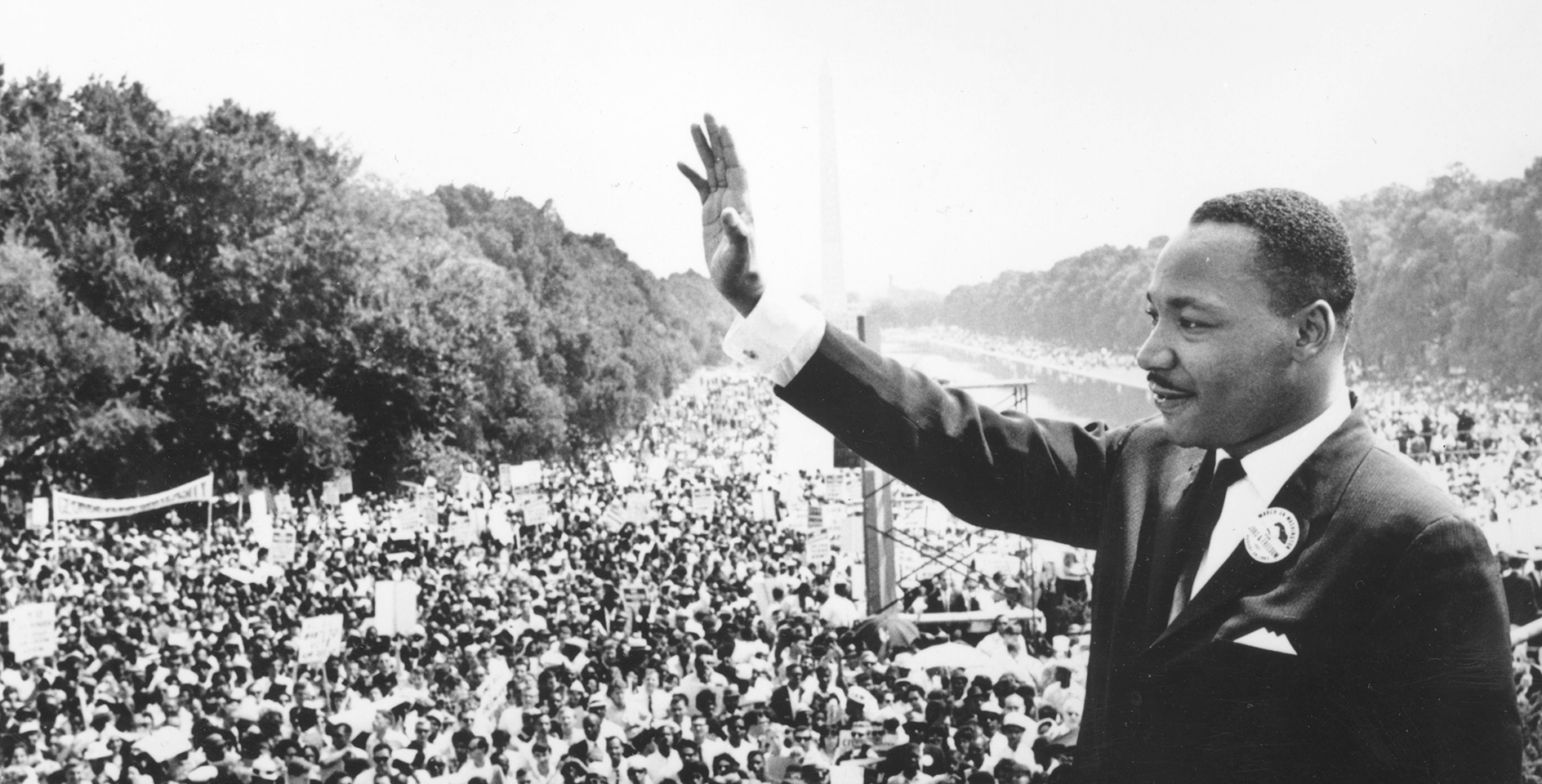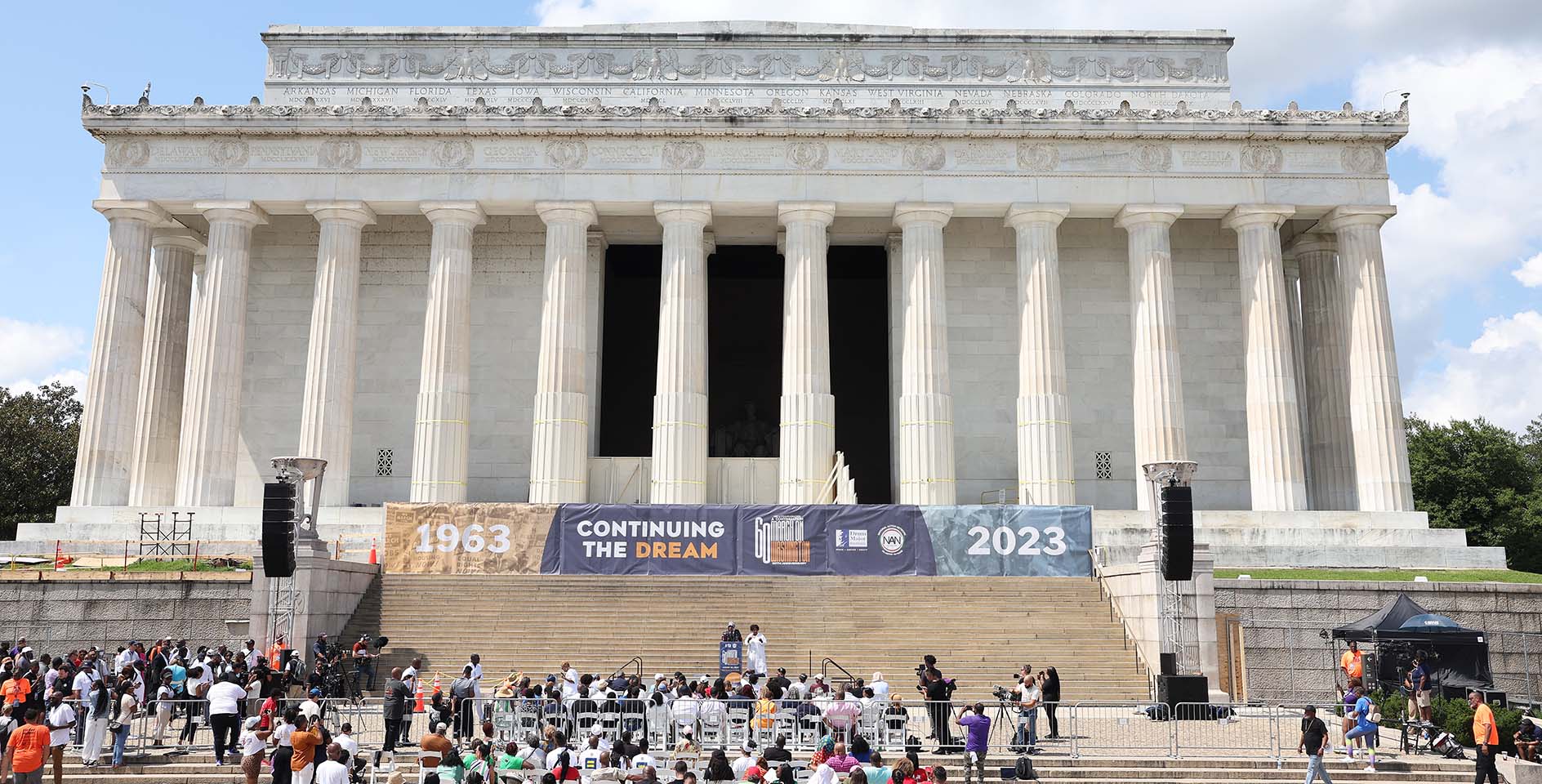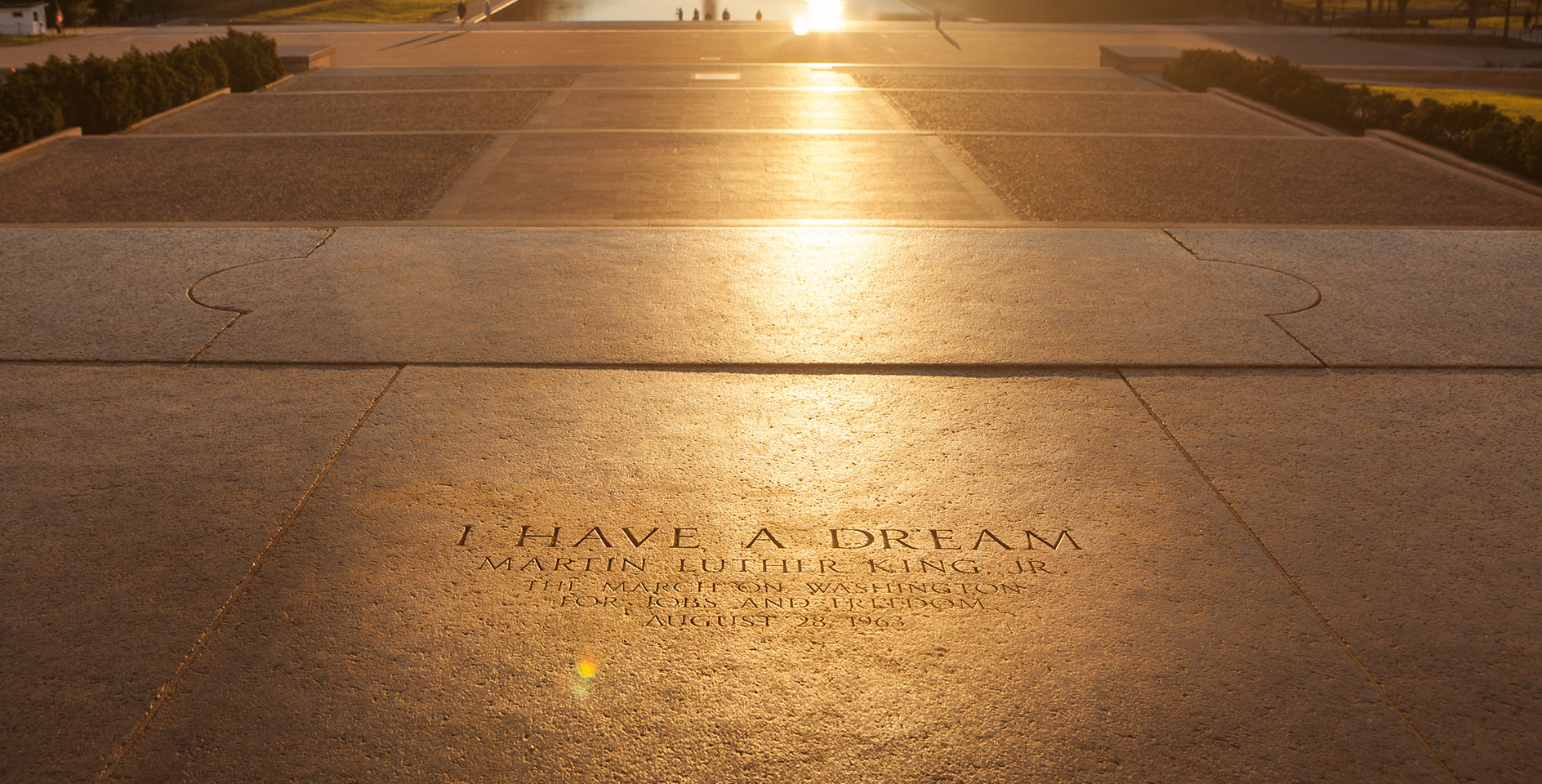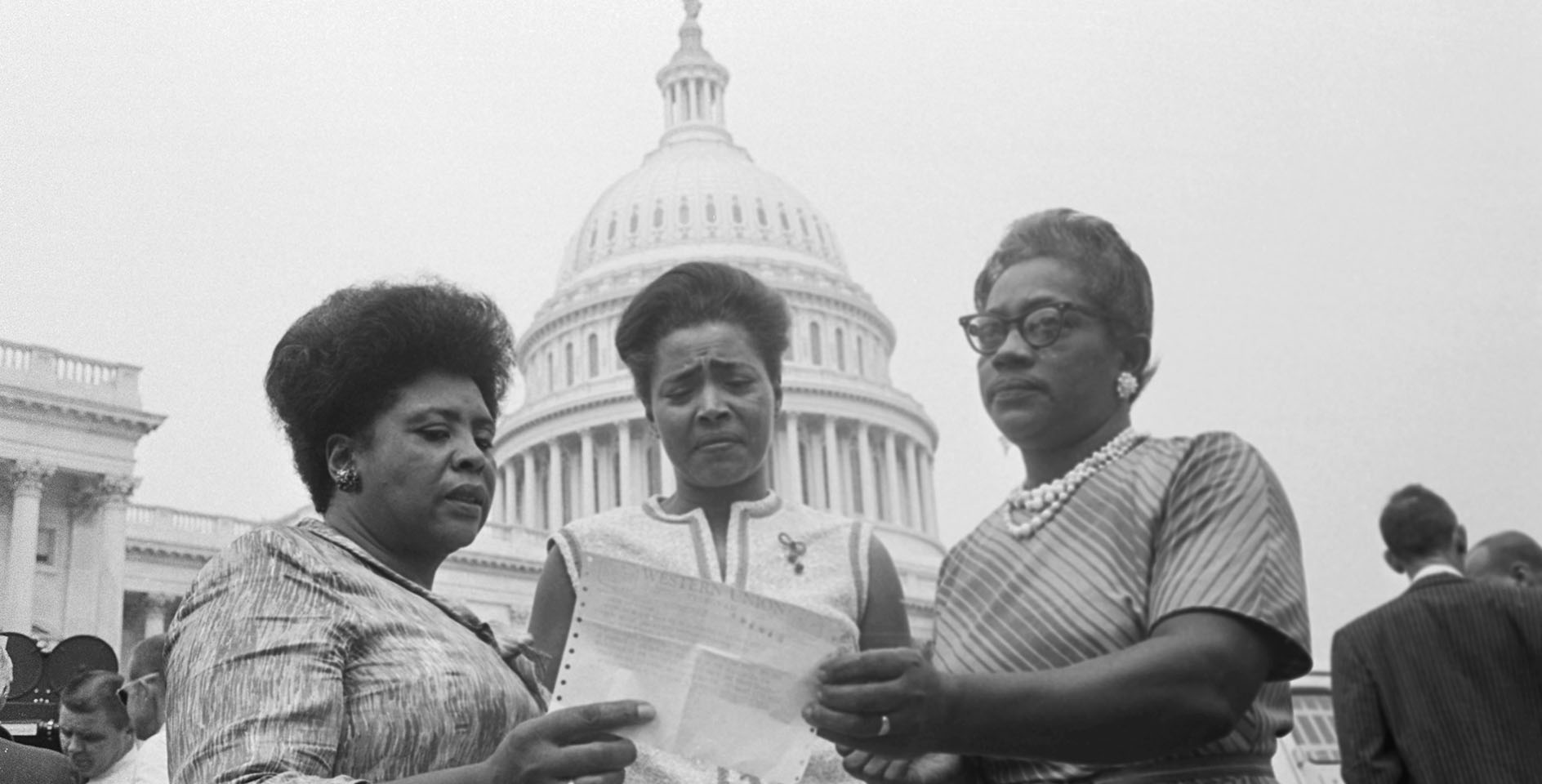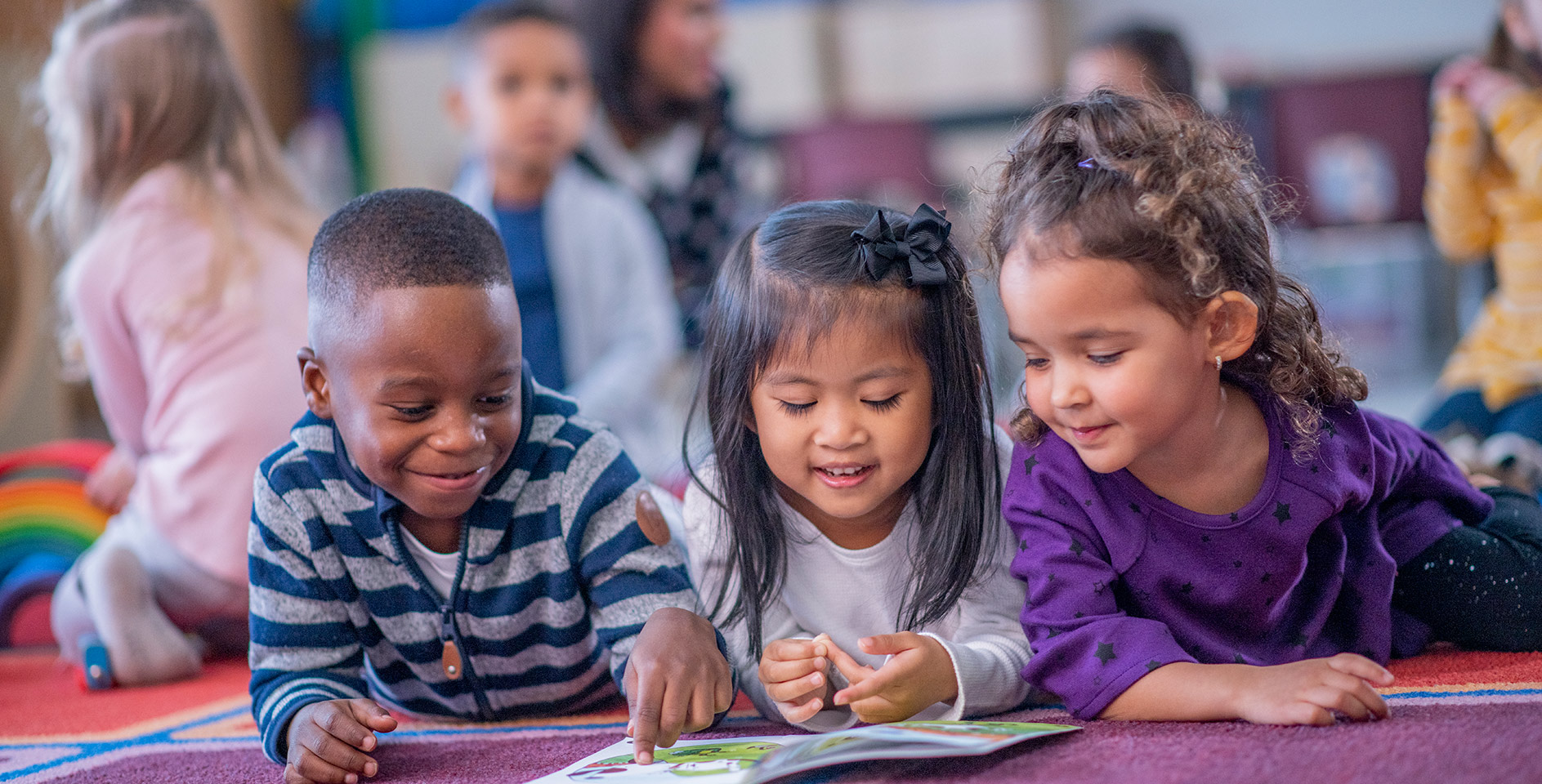This week marks the 57th anniversary of the original March on Washington. This event, held on Aug. 28, 1963, helped to pass the Civil Rights Act (1964) and the Voting Rights Act (1965).
Here are five facts you should know about the landmark civil rights protest march.
1. The event—officially known as the “March on Washington for Jobs and Freedom”—was organized by the “Big Six” leaders of the civil rights movement: A. Philip Randolph, Whitney M. Young, Jr., Dr. Martin Luther King Jr., James Farmer, Roy Wilkins, and John Lewis. Bayard Rustin was chief organizer of the march.
Although the organizers disagreed about the purpose of the march, the group came together on a set of goals: passage of meaningful civil rights legislation; immediate elimination of school segregation; a program of public works, including job training, for the unemployed; a federal law prohibiting discrimination in public or private hiring; a $2-an-hour minimum wage nationwide; withholding Federal funds from programs that tolerate discrimination; enforcement of the 14th Amendment to the Constitution by reducing congressional representation from states that disenfranchise citizens; a broadened Fair Labor Standards Act to currently excluded employment areas; and authority for the Attorney General to institute injunctive suits when constitutional rights are violated.
2. The event took a staggering level of logistical effort. Organizers and officials planned for a crowd of about 150,000. But on the day of the march over 250,000 gathered together on the National Mall. To get to Washington, D.C., protesters took more than 2,000 buses, 21 chartered trains, 10 chartered airliners, and uncounted cars. All regularly scheduled planes, trains, and buses were also filled to capacity. On the National Mall, over 100 portable toilets were set up along with 16 first-aid stations. Eight 2,500-gallon water tanks were set up, which fed some 21 portable water fountains. Additionally, spouts were attached to fire hydrants so marchers would have access to drinking water. Volunteers prepared some 80,000 boxed lunches—sold for 50 cents each—consisting of a cheese sandwich, an apple, and a slice of cake.
3. Event organizer Bayard Rustin recruited 4,000 off-duty police officers and firemen to serve as event marshals, and coached them in the crowd control techniques he’d learned in India studying nonviolent political participation. The official law enforcement also included 5,000 police, National Guardsmen, and Army reservists. No marchers were arrested, though, and no incidents concerning marchers were reported.
4. Representatives from each of the sponsoring organizations addressed the crowd from the podium at the Lincoln Memorial. Speakers (dubbed “The Big Ten”) included The Big Six; three religious leaders (Catholic, Protestant, and Jewish); and labor leader Walter Reuther. Along with the speakers, the marchers were entertained by celebrities, including Ossie Davis, Joan Baez, Mahalia Jackson, Bob Dylan, Peter, Paul and Mary, and Jackie Robinson.
5. King was the last speaker because no one else wanted that slot, since all of the other speakers assumed the news media would leave by mid-afternoon. King agreed to take it and planned to speak for four minutes, but ended up speaking for 16 minutes. He improvised the most recognizable, memorable part of the speech for which he is most famous, according to his speechwriter and attorney Clarence B. Jones. Although King had spoken about a dream before two months earlier in Detroit, the “dream” was not in the text prepared by Jones. King initially followed the text Jones had written but gospel singer Mahalia Jackson yelled, “Tell ’em about the dream, Martin!” King nodded to her, placed the text of his speech aside, and veered off-script, delivering extemporaneously what is referred to as the “I Have a Dream” speech, one of the most famous orations in American history.
